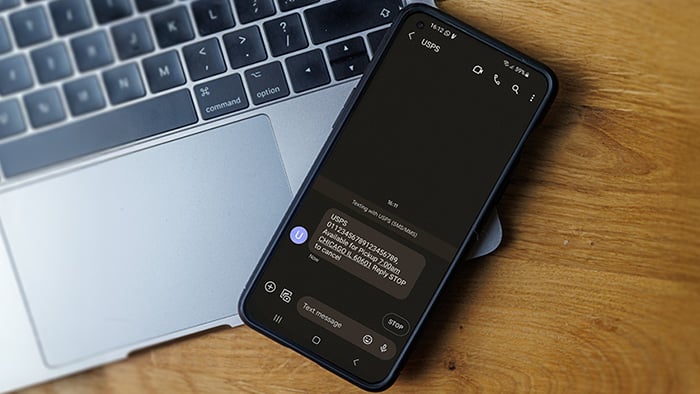What are phishing emails and how do they work?
Email phishing is a cybercrime technique that uses fraudulent emails to trick victims into clicking dangerous links or revealing personal information such as account passwords and credit card details. Although some are obvious fakes, sophisticated con-artists can create convincing scam emails that appear to come from reputable sources, like Amazon.
Scams like Amazon phishing emails are designed to dupe you into providing personal information in the belief that you're dealing with a well-known, legit organization. But, if you fall for their ruse, the scammers will have access to your data and be able to make fraudulent purchases or commit other forms of identity theft.
Fake Amazon email scams and other phishing attacks are a kind of social engineering technique. Using similar forms of trickery and manipulation, phishing scams can range from Facebook phishing to Apple ID phishing scams. Check out our essential guide to phishing for a full overview.
How to spot Amazon phishing emails
Spotting an Amazon phishing email may be hard, but it’s not impossible. There are usually telltale signs to help you identify phishing emails if you know what to look for. And always remember that if you’re in doubt, don’t click.
Here’s how to spot an Amazon scam email:
-
Suspicious topics: If you get an email from Amazon claiming that you “won a prize,” “your payment details have expired,” or you need to “verify activity on your account,” it’s likely a spoofing attack or another kind of tech support scam.
Amazon will always have you deal with matters relating to payments or account security directly through your Amazon account. If you think your Amazon account has been hacked, contact Amazon directly.
-
Unusual formatting, spelling, or grammar: Does something seem off about that email? Amazon has a dedicated team of copywriters carefully crafting their messages, so sloppy errors should set off alarm bells. Keeping an eye out for formatting, spelling, and grammar mistakes can help prevent phishing attacks.
-
Emotional language: Hackers try to play on people’s emotions to encourage them to interact with their scams. Messages purportedly from Amazon that make you fearful or excited are unusual, and you should always be suspicious of emails saying things like “act now” or “you won!”
-
Unfamiliar email addresses: If you get a possible Amazon fraud email, take a look at the sender’s address. Don’t click on any messages from senders that are not from Amazon.
To see some concrete examples of the techniques used in fake amazon emails sent by hackers, check out these ten real-world phishing email examples. Learn from them and protect yourself.
 Amazon phishing emails are usually poorly written and oddly formatted.
Amazon phishing emails are usually poorly written and oddly formatted.
How to protect yourself from Amazon scam emails
Staying vigilant and casting a critical eye over the emails landing in your inbox will help protect you against Amazon scam emails. Watch out for obvious red flags and always proceed with caution — especially when dealing with any kind of Amazon account security email.
What the experts say
“We recommend anyone receiving these emails to delete them. If you have doubts about whether a message is real or fake, do not click on any links or attachments. Instead, reach out to the company from which the message appears to be, directly, by visiting their website and using the contact information listed on the site.”
Using anti-track software can help you monitor suspicious activity. And creating strong passwords and using a good password manager can help keep hackers out of your accounts.
Here are the top ways to protect against Amazon spoof emails:
 Don’t click on a link
Don’t click on a link
If you receive a possible fake email from Amazon, don’t click on any links. Links to real Amazon pages have a dot before amazon in the URL. Phishing links will take you to a fake website that’s not part of Amazon, and they might infect your computer with spyware or other forms of malware.

 Don’t call a phone number
Don’t call a phone number
Suspicious emails may prompt you to call a number, but doing so will only increase your vulnerability to fraudsters. If it’s a premium-line scam, the call itself will cost you money and reveal your phone number to cybercriminals. Instead, call a customer support helpline listed on Amazon’s actual website to verify claims made in the email.
 Don’t reply to emails
Don’t reply to emails
Resist the urge to reply to Amazon phishing emails. Even if you reply without giving away information, you may end up receiving more spam emails in the future. If you get an Amazon sign-in attempt email, or an Amazon payment declined email, contact Amazon directly through their website.
 Don’t give out private information via email, phone, or text
Don’t give out private information via email, phone, or text
When sharing personal data, always consider whom you’re sharing with and for what purpose. Sophisticated Amazon spam emails using spear phishing techniques can be particularly difficult to spot, so it’s good practice to never provide passwords, login details, or financial data to someone by phone, text, or email — even if the request appears to be legitimate.
 Keep up with the news about the latest Amazon scams
Keep up with the news about the latest Amazon scams
A more recent Amazon phishing scam involves Amazon Prime customers being falsely alerted to a large purchase made on their account. The Amazon prime scam email contains a fake “service number” for victims to call to resolve the issue. Having made contact, the scammers then try to obtain login details to the Prime account.
Hackers are always creating new schemes to avoid detection and trick victims. Amazon scam email ploys are no exception. Keeping yourself informed will help you identify and defend against the latest threats.
How to report Amazon phishing emails
If you’ve received fake Amazon phishing emails, you’re not alone. Reporting internet scams helps companies to stop future attacks against you and others. And though figuring out how to report cybercrime can be confusing, Amazon makes it easy.
To report a phishing email to Amazon, simply go to Amazon’s customer service page and follow the onsite instructions.

What to do if you’re scammed by fake Amazon emails
If you fall victim to an Amazon scam email, here’s what you should do:
-
Don’t panic: Remaining calm will help you handle the situation with a clear head and mitigate the fallout. And don’t feel foolish either — it happens to a lot of people. Phishing plots are designed to be difficult to spot.
-
Change your passwords: Your Amazon password is the key to your account and all of the private financial and personal information it contains. If you think your Amazon password has been compromised, change it immediately — use a long and unique passphrase — to lock scammers and fraudsters out.
-
Contact the police: Amazon scams are a serious cybercrime — the potential damages can be very expensive and lead to additional forms of identity theft. Your local police department can help guide you through the steps you need to take.
-
Notify your bank: Amazon accounts are often tied to bank accounts, so it’s important you inform your bank about the situation. That way, they can freeze all unverified purchases and possibly help catch the fraudsters.
-
Cancel any credit cards that are compromised: All credit cards associated with your Amazon account are at risk. To be on the safe side, cancel them. This is a normal procedure for banks, and they’ll send you new cards asap.
-
Inform Amazon: Reporting the scam to Amazon will allow them to re-secure your account, spread awareness about the scam to prevent others from being victimized, and help them develop tools and procedures to stop future phishing attacks.
Stop phishing attacks and protect your personal data
Good cyber habits are crucial for avoiding phishing attacks and other scams. But no matter how careful you are, hackers can still take advantage of security vulnerabilities in the software you use or the websites you visit. Stay protected at all times with Avast One.
Avast One provides all-encompassing protection against suspicious links, malware, data breaches, and more. Protect all your devices and data, block malware, and steer clear of the malicious links that phishers use with Avast One.



 Amazon phishing emails are usually poorly written and oddly formatted.
Amazon phishing emails are usually poorly written and oddly formatted.







/Academy-How-to-stop-phone-spoofing-Thumb.jpg)

/How-to-spot-and-avoid-Apple-ID-phishing-scams-Thumb.jpg)